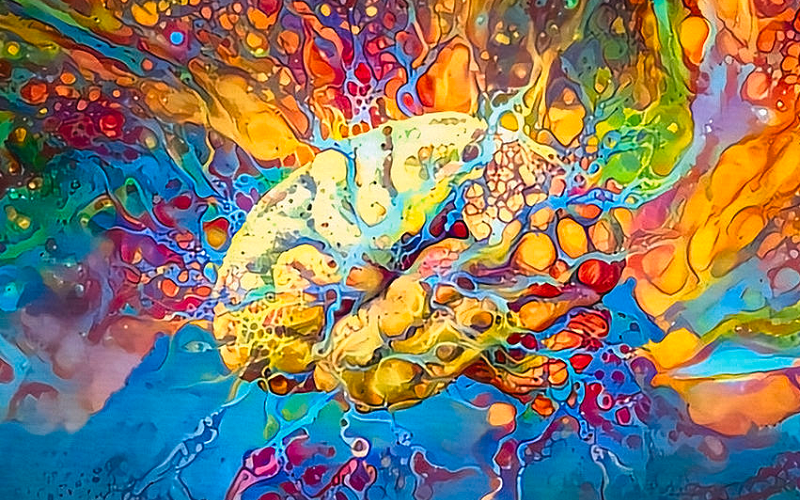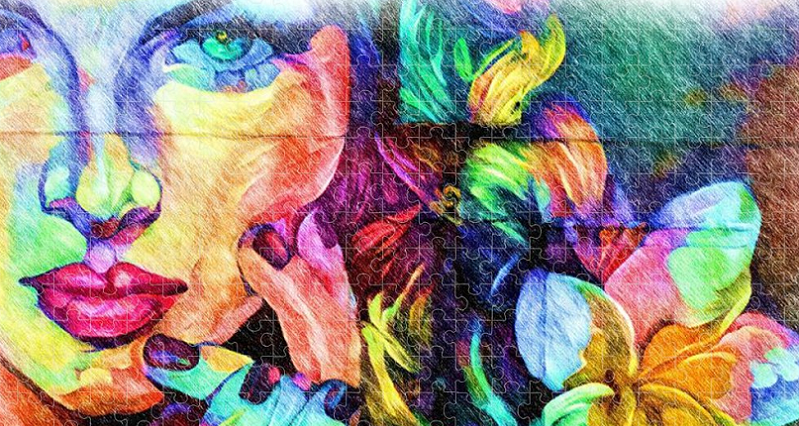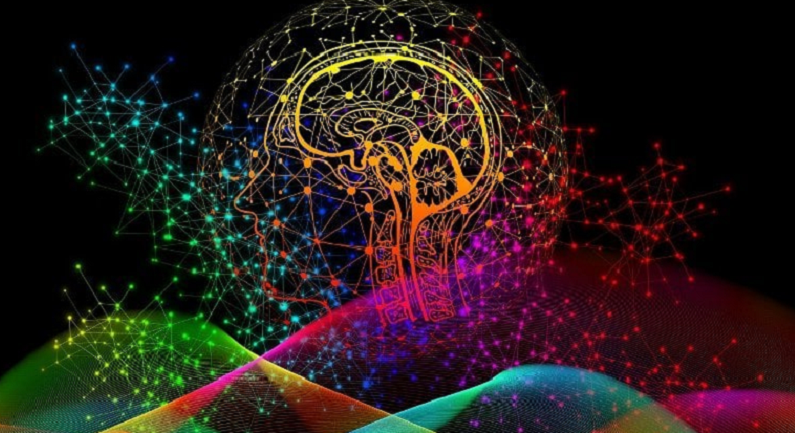
Art in its myriad forms has always captivated the human spirit, but what exactly happens in our brain when we gaze upon a masterpiece? Here we explore the fascinating world of abstract and realistic art, examining how each genre uniquely influences our cognitive and emotional responses.
Abstract art, with its emphasis on color, form, and the non-representational, challenges our perception and thought processes in ways that are vastly different from realistic art, which mirrors the world around us with precise detail. By understanding how our brains react to these distinct art forms, we gain deeper insights into the complex interplay between visual stimuli and cognitive health.
Contents
Understanding Abstract Art
When we embark on the journey to understand abstract art, we are entering a realm where colors, shapes, and textures speak in a language beyond the literal representation of the world. Abstract art, often seen as a radical departure from traditional art forms, invites viewers to interpret and experience art in a uniquely personal way.
Definition and Characteristics of Abstract Art
At its core, abstract art is defined by its departure from realistic depiction. It doesn’t seek to accurately portray visual reality but instead uses shapes, colors, forms, and gestural marks to achieve its effect. Often, it’s the process of abstraction that takes center stage – distorting or simplifying aspects of the real world to highlight certain qualities or evoke specific emotions.
This form of art challenges the viewer’s conventional thought processes, engaging them in a deeper interaction with the artwork. It’s not just about what you see; it’s about what you feel, think, and interpret. The ambiguity and openness to interpretation are fundamental characteristics of abstract art.
Historical Context and Evolution of Abstract Art
Abstract art didn’t emerge in a vacuum; it was a response to the changing cultural and technological landscape of the late 19th and early 20th centuries. Artists began to seek new ways to express the rapidly changing world around them. This era was marked by significant advancements in science, technology, and philosophy, all of which played a role in shaping abstract art.
Key movements such as Cubism, Futurism, and Surrealism broke away from traditional art forms, laying the groundwork for abstract art. These movements challenged the conventional notions of representation, emphasizing a more subjective experience of the world [1].
Key Abstract Artists and Examples
Numerous artists have made significant contributions to the development of abstract art. For instance, Wassily Kandinsky, often credited as a pioneer of pure abstract art, believed that colors and shapes could be used to express spiritual realities. His work, like “Composition VII,” is a symphony of colors and forms and is considered a masterpiece of abstract expression.
Piet Mondrian’s work is another excellent example. His compositions with red, yellow, and blue, intersected by black lines, demonstrate a different approach to abstraction – one that is more geometric and structured.
Other notable artists include Jackson Pollock, known for his drip paintings, and Mark Rothko, famous for his large, emotive color fields. Each artist brought a unique perspective to abstract art, contributing to its rich and diverse history.

Exploring Realistic Art
In contrast to the subjective and interpretive nature of abstract art, realistic art offers a different aesthetic experience, one rooted in the accurate and detailed representation of the world around us. Realistic art, with its focus on lifelike portrayal, has a long and rich history that continues to captivate viewers with its technical mastery and expressive power.
Definition and Key Features of Realistic Art
Realistic art is characterized by its attempt to represent subject matter truthfully, without artificiality and avoiding artistic conventions, implausible, exotic, or supernatural elements. This art form is grounded in the meticulous depiction of the world, capturing everything from landscapes and objects to human figures with precision and attention to detail [2].
The essence of realism lies in its focus on everyday subjects, and its goal is often to portray the ordinary, mundane aspects of life in a way that reveals their inherent beauty. Realistic art is not just about mirroring what we see; it’s about interpreting and presenting the world in a way that feels tangible and familiar.
Historical Development of Realistic Art
The origins of realistic art can be traced back to the Renaissance period, a time when artists began to focus on the accurate depiction of the human body and the natural world. This period marked a departure from the more stylized and symbolic forms of medieval art, ushering in new techniques like perspective, shading, and lifelike coloration.
The 17th-century Baroque period brought even more emphasis on realism, with artists like Caravaggio and Rembrandt van Rijn leading the way. Their works are known for their dramatic use of light and shadow and their focus on realism and emotional intensity.
In the 19th century, the Realism movement emerged as a reaction against Romanticism and Neoclassicism, focusing on depicting the everyday life of common people. Artists like Gustave Courbet and Jean-François Millet portrayed the life of the working class, emphasizing the dignity of their subjects [3].
Notable Realistic Artists and Works
Several artists stand out for their contributions to realistic art. Leonardo da Vinci, with his iconic works like the “Mona Lisa” and “The Last Supper,” demonstrated an extraordinary ability to capture human expressions and emotions with lifelike accuracy.
In the realm of landscape painting, artists like John Constable and Jean-Baptiste-Camille Corot depicted nature with a realism that was both poetic and detailed, capturing the ever-changing moods of the natural world.
Realistic portraiture found a master in Rembrandt, whose self-portraits reveal a deep understanding of human character and emotion. His use of light and shadow brought a dramatic intensity to his subjects, making his paintings resonate with viewers centuries later.

The Brain’s Perception of Art
The way our brain perceives art is a complex and fascinating process, involving a symphony of neural activities. Here we look into the cognitive and neurological mechanisms that come into play when we experience art. Understanding these processes not only enhances our appreciation of art but also sheds light on the intricate workings of the human brain.
Cognitive Processes Involved in Viewing Art
Viewing art is not a passive experience; it actively engages various cognitive processes. When we look at a piece of art, our brain works to interpret and make sense of the visual information. This involves pattern recognition, emotional processing, memory recall, and imaginative thinking.
The brain’s response to art is deeply personal and can be influenced by individual experiences, memories, and cultural background. For instance, abstract art may trigger a more introspective and interpretive cognitive process, whereas realistic art might evoke a more immediate and direct emotional response due to its familiar imagery [4].
Neurological Responses to Visual Stimuli
The neurological response to art involves multiple areas of the brain. The occipital lobe, primarily responsible for processing visual information, is the first to engage. Following this, the frontal cortex, which is associated with emotional processing, decision-making, and memory, comes into play.
Research using functional magnetic resonance imaging (fMRI) has shown that viewing art can activate the brain’s reward pathway, releasing dopamine, a neurotransmitter associated with feelings of pleasure and satisfaction. This response is similar to what we experience when we look at something we find beautiful or when we listen to music we enjoy.
Psychological Impact of Art on the Brain
Art can have a profound psychological impact on the brain. It can evoke a wide range of emotions, from joy and wonder to sadness and introspection. The experience of engaging with art can also be therapeutic, helping to alleviate stress and promote mental well-being.
Moreover, the interpretive nature of viewing art enhances cognitive flexibility, encouraging the brain to think in new and different ways. This is particularly true for abstract art, which often requires a more imaginative and open-ended approach to interpretation.
Comparative Analysis of Brain’s Reaction to Realistic and Abstract Art
The human brain’s reaction to art is as diverse as the art forms themselves. In this section, we will compare and contrast how our brains react to abstract art versus realistic art. Understanding these differences not only enriches our experience of art but also provides insights into the complex nature of human perception and emotion.
Response to Abstract Art
Abstract art, with its emphasis on non-representational forms, often elicits a unique response in the brain.
Emotional Impact
Abstract art can provoke a wide range of emotional responses, often more ambiguous and open-ended than those elicited by realistic art. The lack of clear reference points allows individuals to project their own feelings and experiences onto the artwork, making the emotional experience highly subjective and personal [5].
Cognitive Engagement
Abstract art encourages a deeper cognitive engagement. It challenges viewers to interpret and find meaning without explicit cues, engaging brain areas involved in creativity, imagination, and abstract thinking. This form of art often requires a more active participation from the viewer to construct a personal interpretation.
Neurological Studies and Findings
Neurological studies using technologies like fMRI have shown that abstract art can activate multiple brain regions. These include areas involved in emotional processing, pattern recognition, and even those parts of the brain that are responsible for processing complex thoughts and ideas.
Reaction to Realistic Art
In contrast, realistic art, with its more direct representation of the world, often elicits a different type of brain response.
Emotional Resonance
Realistic art tends to evoke more immediate and recognizable emotional responses. The familiarity of the subjects depicted – whether landscapes, people, or everyday objects – can trigger specific memories and feelings, creating a sense of connection and empathy.
Cognitive Interpretation
The cognitive process involved in viewing realistic art is often more straightforward. The brain recognizes and processes familiar images, which can lead to a quicker emotional response. However, this does not mean that realistic art lacks depth; rather, its complexity can lie in the nuances of how reality is depicted.
Neurological Research Insights
Research suggests that realistic art can stimulate brain regions associated with visual recognition and emotional resonance. For instance, seeing a realistically painted landscape might activate the areas of the brain involved in spatial awareness and memory, as we recall our own experiences with similar landscapes.
References
[1] What does the brain tell us about abstract art?
[2] This is your brain on art: A neuroscientist’s lessons on why abstract art makes our brains hurt so good
[3] An objective evaluation of the beholder’s response to abstract and figurative art based on construal level theory
[4] Artists ‘have structurally different brains’
[5] Brain research shows the arts promote mental health

